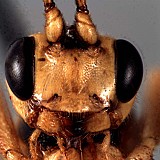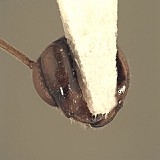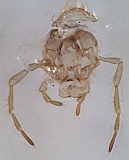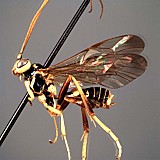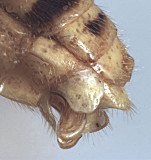Physotarsus flavipennis Zhaurova, 2009
The distinctly punctate mesopleuron in combination with the distinctive wing color (Fig. 4) readily separates this relatively large-bodied species from all other described Physotarsus. Both P. adriani Gauld and P castilloi Gauld have similarly bicolored wings but much smoother bodies.
There are no specimens currently determined for this OTU, or those specimens determined for this OTU are not yet mappable.
This material is based upon work supported by the National Science Foundation under Grant Number DEB 0328922 with REU supplement DEB 0723663.
Any opinions, findings, and conclusions or recommendations expressed in this material are those of the author(s) and do not necessarily reflect the views of the National Science Foundation.

